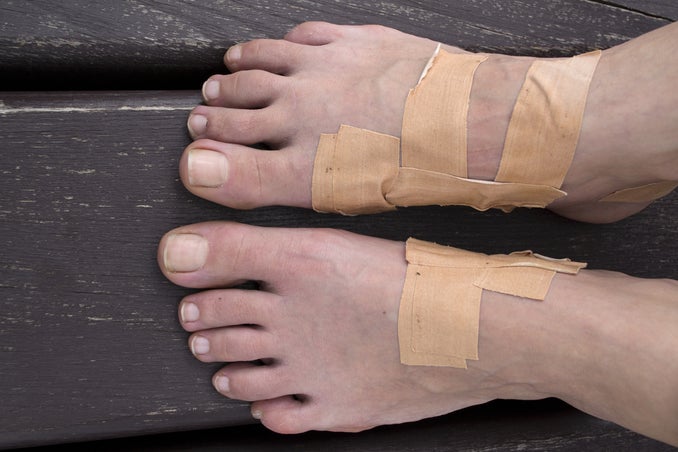New perk! Get after it with local recommendations just for you. Discover nearby events, routes out your door, and hidden gems when you sign up for the Local Running Drop.
As runners, many of us have dealt with nagging blisters that make our runs less enjoyable. It’s common for them to appear on the heel, arch, toes and even under the ball of the foot. Although some blisters are painless, others can be quite painful and irritating.
A common type of blister is the friction blister. According to World Of Sport Science, this happens when “the epidermis, or outer layer, of the human skin becomes separated from the dermis, the layer of skin below,” leaving a bubble or a small lump under the skin’s surface. There are a myriad of different reasons why we develop blisters, and what causes one person to get a blister may not affect another person at all. Some blisters are caused by the type of socks we wear or any new shoes we run in. More often than not, it’s the moisture or heat that our feet produce and socks trap that are responsible for blisters.
Related: Say No To Sweaty Feet And Blisters With These Tips
Another type of blister is the blood one. The World Of Sport Science claims that this type of blister “results from either a direct blow to the skin, or when the skin is pinched as a result of being caught between two harder objects.” Blood blisters are often red but can turn dark purple or black over time. These blisters can occur if you are running in sneakers that are too small.
As a runner, I’ve had my fair share of blisters. One thing I’ve learned is that it’s essential to take care of them before they lead to infection. Here are some ways to treat blisters and prevent them in the future:
Related: 6 Things Runners Are Probably Doing Wrong
- Leave it alone. Sometimes the best treatment for a blister is to simply leave it alone. Putting a bandage on will protect it, or even sticking moleskin over the blister helps to heal it. Many people are tempted to drain the blister; however this increases the chances of infection. Once you puncture the opening you leave it vulnerable to bacteria and infection.
- Wear fitting attire. Running in shoes that don’t fit is a big culprit for creating blisters. Jessica Wu, MD, a dermatologist in Los Angeles, explains that “if they pinch in the store, chances are they’ll pinch when you wear them for the first time.” So make sure you pick shoes that fit! Sock choice is also important. Because skin friction is most common when your feet are more moist than dry, it’s important to have the proper wicking socks to keep your feet on the drier side. Experts recommend avoiding socks made of cotton because they tend to absorb the moisture.
- Use skin lubrication. Although this won’t heal it, many physicians advise athletes to use lubricants in order to prevent blisters. In the article “Foot Blister Prevention: What You Can Recommend To Athletes,” athletes that tend to get blisters should try “applying lubricants (like petroleum jelly, bag balm or even dry soap flakes) before they put on socks.” This helps to reduce the friction.
